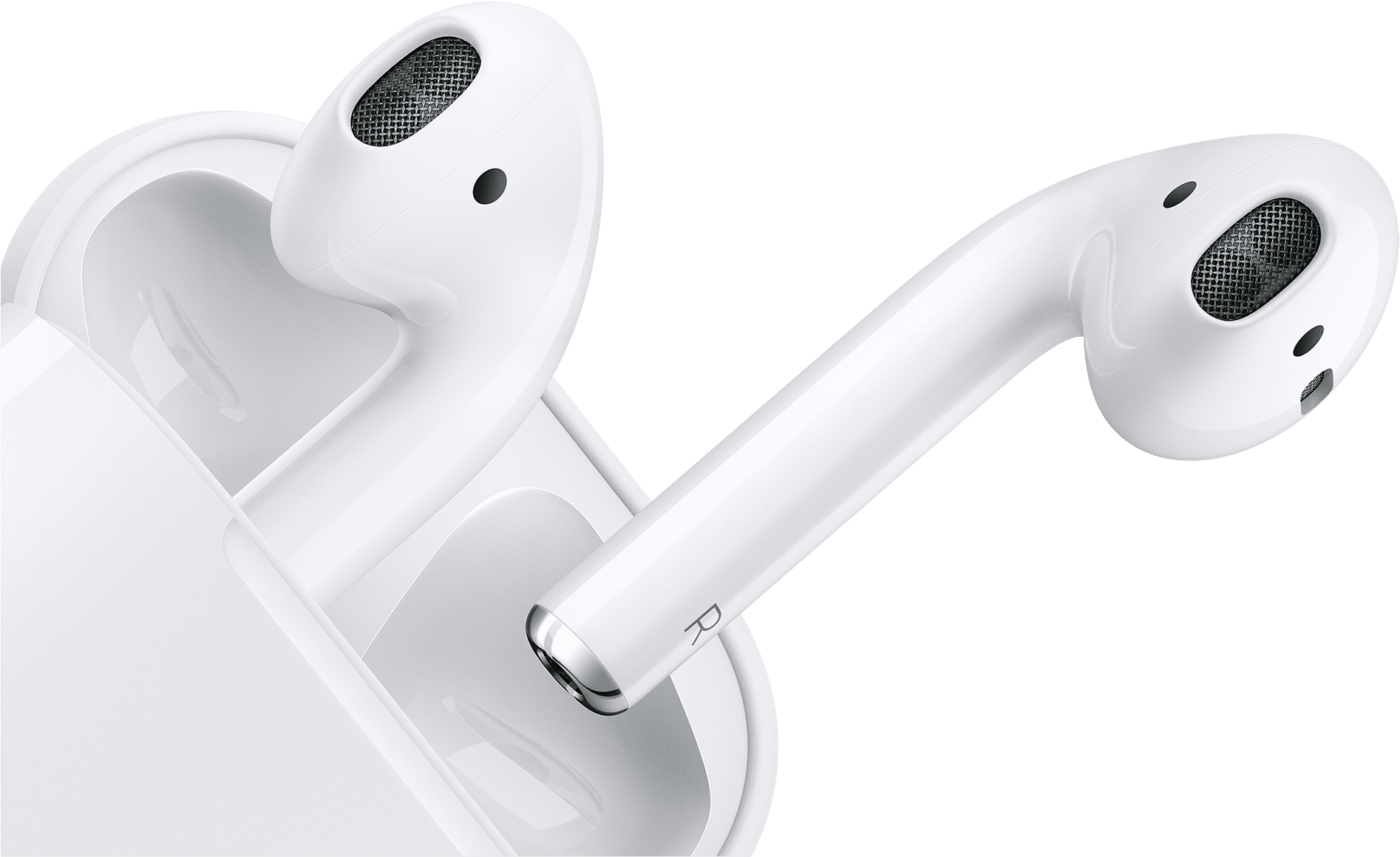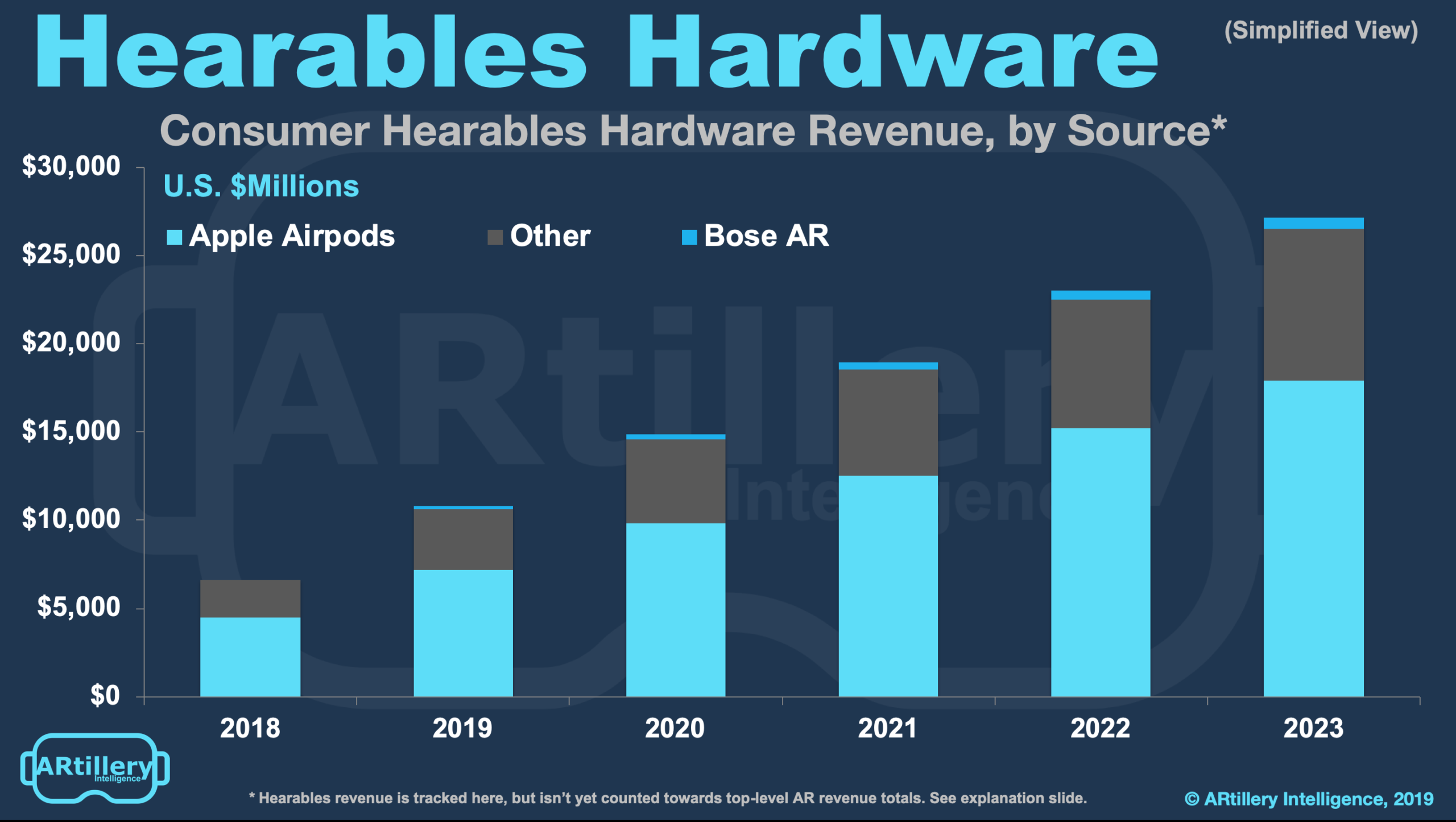
ARtillery Briefs is a video series that outlines the top trends we’re tracking, including takeaways from recent reports and market forecasts. See the most recent episode below, including narrative takeaways and embedded video.
The common connotation with AR is graphical overlays on the physical world. But there’s growing realization that this definition is too limiting. So other forms of augmentation are starting to broaden AR. Chief among them is sound, also known as “Audio AR,” delivered through “hearables.”
As explored in the latest ARtillery Intelligence report, Audio AR involves informational overlays that augment your perception of the world, delivered through an ambient whisper instead of graphics. Advantages include avoiding AR glasses’ style crimes or awkwardness of holding up your phone.
The opportunity also builds on an existing base of hearables like AirPods, which sold 25 million units last year and are on pace for 80 million units by 2023. Commodity players will follow as is often the case; and the ensuing hardware penetration will be the first step to audio AR.
The second step will be apps. That will happen as Audio AR platforms develop “lighthouse apps,” then open things up for third party development. Bose is already there with Bose AR, while Google has developed live language translation apps and Apple will enter a bit later, as it often does.

iWear
Speaking of Apple, it’s highly motivated towards Audio AR as part of a wearables suite that counteracts slowing iPhone sales as we’ve speculated. Its wearables unit reported $5.5 million in revenues last quarter which offset a $3.5 million decline in year-over-year iPhone revenues.
We believe that Apple’s AR glasses incidentally will be a part of that wearables suite, but AirPods are already ahead and validated in today’s market. The next step will be to open up development to third parties, just like Apple has done with other platforms like iOS and tvOS.
If you think about AirPods, users wear them for large portions of the day, but they’re mostly idle except for occasional pings and phone calls. The next step is persistent and personalized ambient audio, and that will require apps. Think of it like the iPhone 1 before the app store came out.
What will Audio AR apps look like? We’ve profiled a handful of them here and here. Eventual killer apps could inform you of surroundings (local discovery) and people (networking at an event). There are also potential enterprise and productivity apps built on hands-free voice instructions.

Touch Point
On to Google, It’s likewise motivated towards Audio AR as an always-on touch point for users to search and be proactively served content. In fact, it’s already conditioning this behavior through Google Assistant and voice search. That’s all well-aligned with Google’s core search business.
Google’s hearables hardware so far is Pixel Buds, which are a lot clunkier and less popular than AirPods. But importantly, it beats Apple where it potentially counts more which is a superior AI and voice search engine in Google Assistant — especially when compared to the largely inept Siri.
In other words, it will be easier for Google to build sleeker hardware to rival AirPods than it will be for Apple to build an AI and voice engine to rival Assistant. Google’s knowledge graph and head start in voice primes it for Audio AR, which it’s already previewed with live language translation.
Google will continue to cultivate that if you follow its motivations and revenue incentive to reach consumers in more places. Applying that same exercise, it will likely drive towards audio AR apps that inform users of their surroundings in monetizable areas like local discovery and commerce.
Frame the Discussion
Another key player is Bose. As mentioned, it’s already live with a developer platform. BoseAR lets developers build apps that tap into the sensor bundle in its hardware such as Bose Frames, which register things like head nods or direction and then signal app actions accordingly.
Bose also claims it will have a million AR devices in market by year-end. That provides incentive for developers given scale and reach. In fact, we’re already seeing creative apps such as local discovery & navigation, health & fitness, and audio games (see our recent Bose AR app profiles).
Altogether, revenue for audio AR apps will grow to $3.46 billion by 2023 according to ARtillery Intelligence estimates (above). This will include a combination of premium apps, in-app purchases, advertising and commerce. Hearables hardware isn’t yet counted as Audio AR revenue.
See more data, case studies and discussions with real developers in the full report, and in the ARtillery Briefs episode below. The bottom line is that broadening AR’s definition will lead to a broadened set use cases, thus broadened business cases and a more robust AR market.
For deeper XR data and intelligence, join ARtillery PRO and subscribe to the free AR Insider Weekly newsletter.
Disclosure: AR Insider has no financial stake in the companies mentioned in this post, nor received payment for its production. Disclosure and ethics policy can be seen here.


